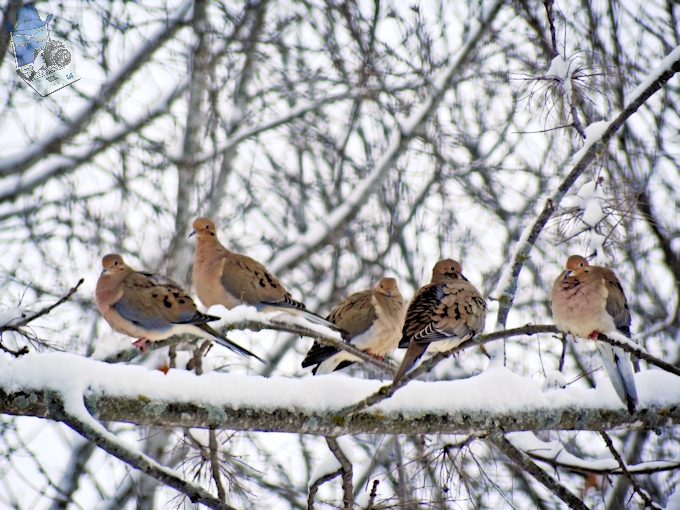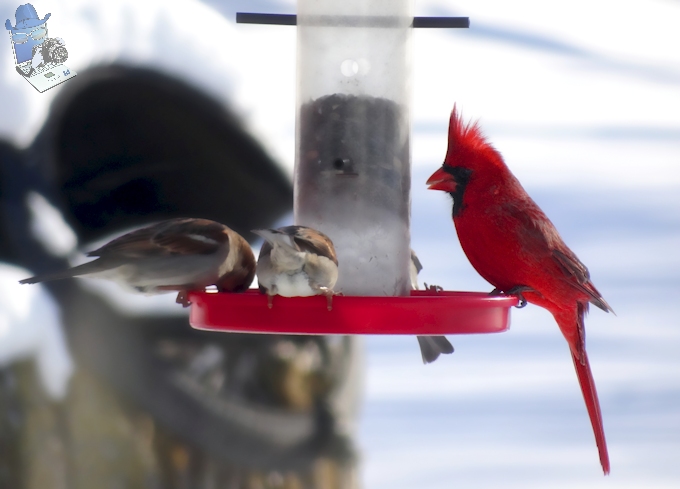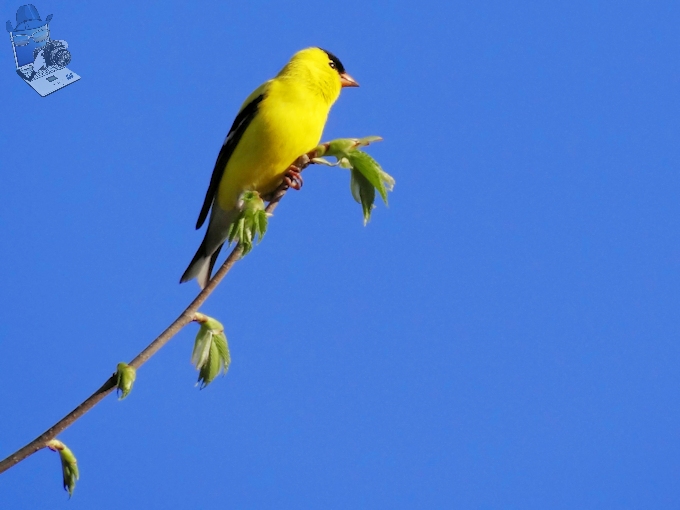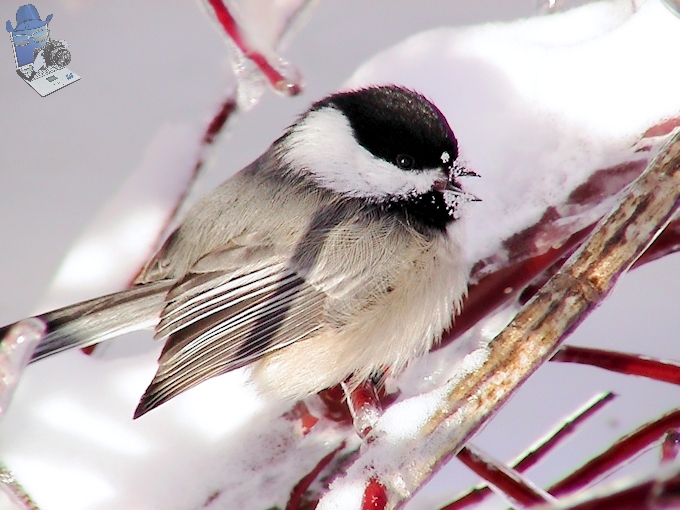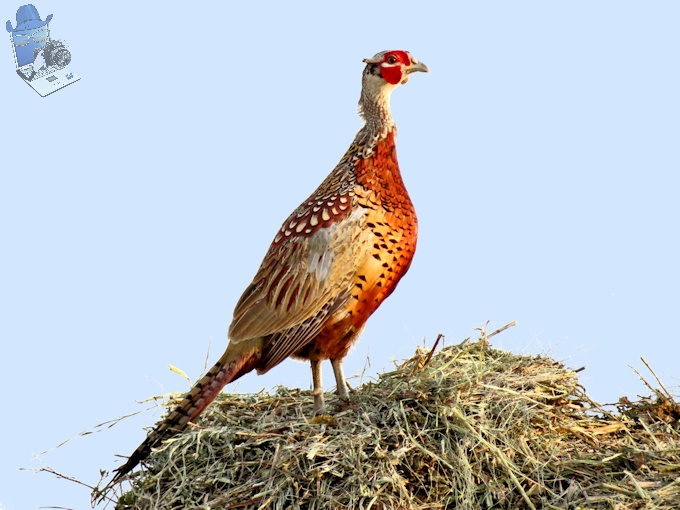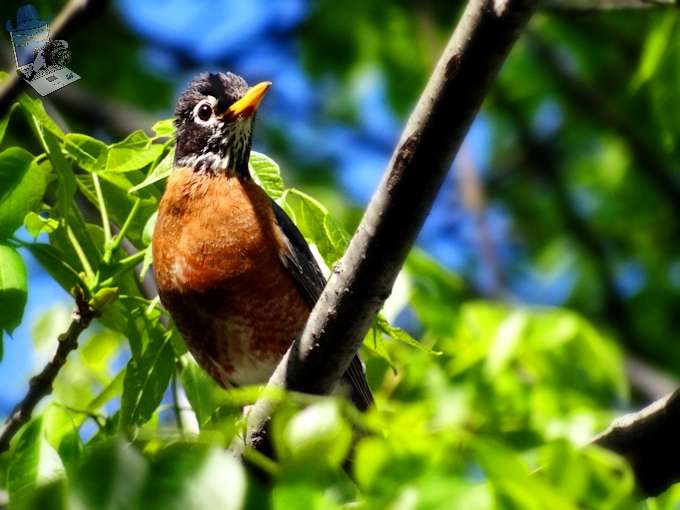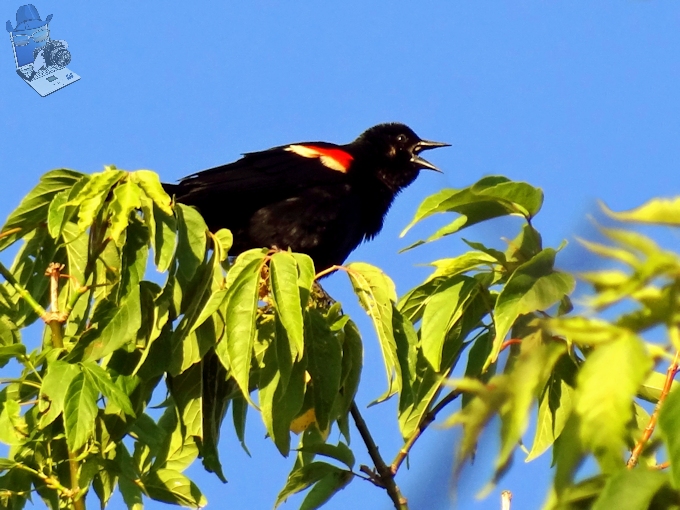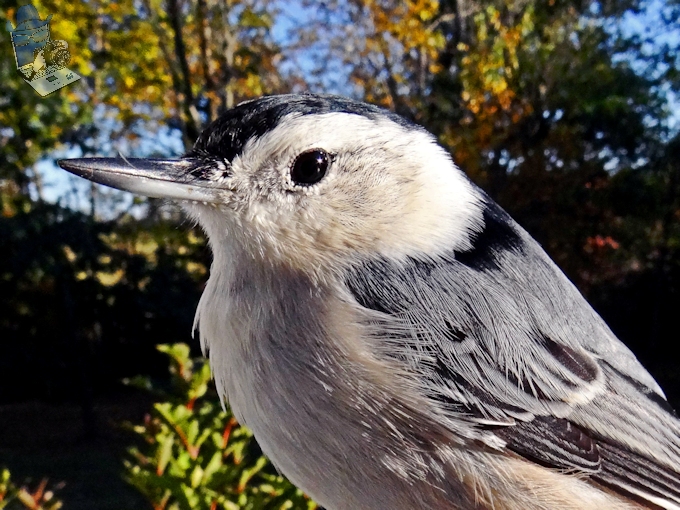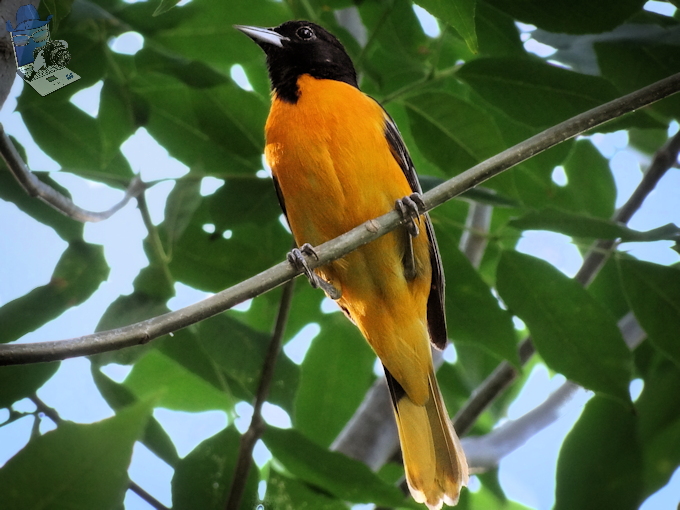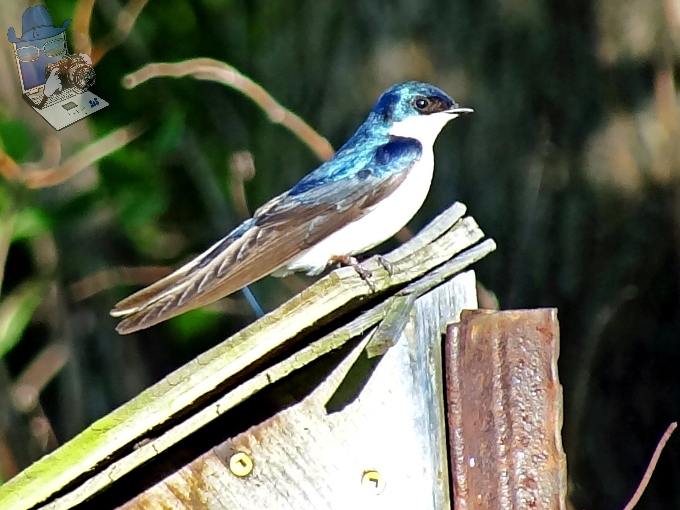I don’t think these Mourning Doves like the new snow either as now their perches in the trees are snow covered again.
Mourning Doves is one of the most abundant and widespread of all North American birds with population estimated at 350 million. They are the most frequently hunted species in North America with more 20 million shot each year. But I only shoot the doves with my camera and not with a gun. But since the Mourning Doves feed on the ground, approximately 1 in 20 will ingest lead shot in the heavily hunted areas and lead poisoning is another threat to the doves.
The nesting pair will have one to six broods a year with normally two eggs in each brood. Mourning Doves eat almost exclusively seeds, but the young are fed crop milk by their parents which is a secretion from the lining of the crop (enlargement of the esophagus) of parent birds that is regurgitated to young birds. It resembles and smells like cottage cheese.
Its plaintive woo-OO-oo-oo-oo call gives the bird its name and the wings can make an unusual whistling sound upon take-off and landing. The bird is a strong flier, capable of speeds up to 55 mph.
Primarily a bird of open country, scattered trees, and woodland edges, the Mourning Dove can survive in the desert as they can drink brackish water that is almost half the salinity of sea water without becoming dehydrated the way humans would.
The Mourning Dove was named Wisconsin’s symbol of peace in 1971.
Chilly Doves
